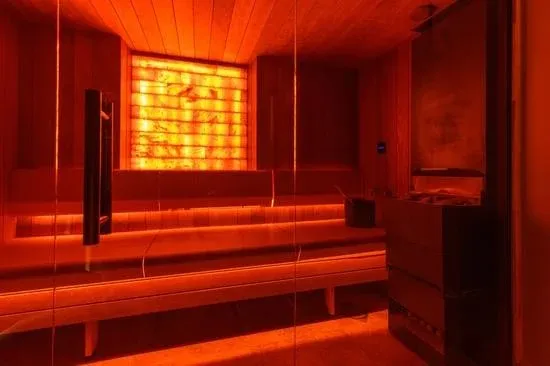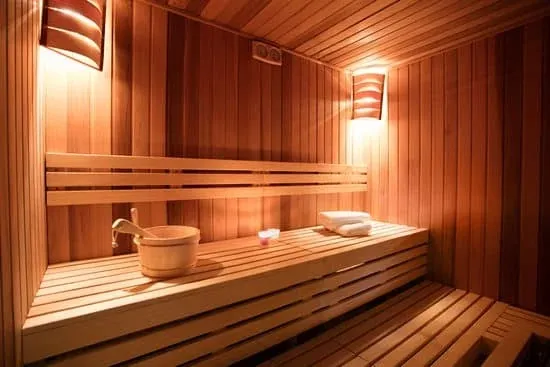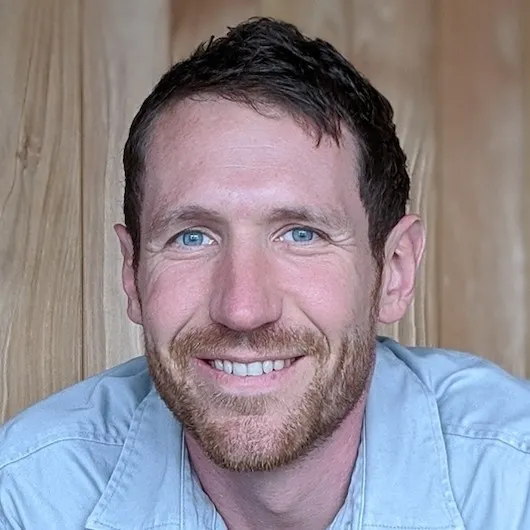Creating Your Personal Stress Relief Ritual with Heat Therapy

In our hyperconnected, always-on modern world, stress has become the default state for millions of people. We wake to alarming news headlines, spend hours in traffic or stressful commutes, navigate workplace demands, manage family responsibilities, and scroll through anxiety-inducing social media before bed. The body and mind were never designed for this level of continuous activation. Without intentional practices to counterbalance chronic stress, burnout becomes inevitable.
A personal stress relief ritual—a consistent, structured practice designed specifically to activate your body's relaxation response—can be transformative. When built around thermal therapy and complementary wellness practices, this ritual becomes a sanctuary from daily demands, a time when healing takes priority over productivity, and presence replaces performance. This isn't about adding another task to your to-do list; it's about creating sacred space for restoration.
Research consistently demonstrates the power of ritual. Studies published by the American Psychological Association show that engaging in regular rituals reduces anxiety, increases feelings of control, and improves overall mental health outcomes. When these rituals incorporate proven stress-reduction techniques like heat therapy, meditation, and breathwork, their effectiveness compounds exponentially.
Understanding Your Stress Profile
Before designing your ritual, it's essential to understand how stress manifests in your life. Stress isn't one-size-fits-all—it affects different people in different ways, and effective rituals must be tailored to your unique stress profile.
Physical Stress Manifestations
Some people carry stress primarily in their bodies. You might experience:
- Muscle tension, especially in neck, shoulders, and jaw
- Headaches or migraines
- Digestive issues
- Sleep disturbances
- Chronic fatigue despite adequate rest
- Increased susceptibility to illness
If physical manifestations dominate your stress experience, your ritual should emphasize heat therapy for muscle relaxation, gentle movement, and body awareness practices described in our guide to thermal mindfulness.
Mental/Emotional Stress Manifestations
Others experience stress primarily as mental and emotional phenomena:
- Racing thoughts or rumination
- Difficulty concentrating
- Anxiety or worry about future events
- Mood swings or irritability
- Feelings of overwhelm
- Emotional numbness or disconnection
If this describes your experience, your ritual should prioritize meditation, breathwork as outlined in our breathwork article, and practices that calm the nervous system and create mental space.
Behavioral Stress Patterns
Stress also manifests through behaviors:
- Procrastination or avoidance
- Overeating or loss of appetite
- Increased alcohol or substance use
- Social withdrawal
- Compulsive phone checking or screen time
- Perfectionism or overworking
Addressing behavioral patterns requires rituals that provide healthier coping mechanisms—alternative ways to self-soothe, connect, and process emotions.

Core Components of an Effective Stress Relief Ritual
While your ritual should be personalized, certain elements create the foundation for effective stress management. Think of these as the essential ingredients—you'll combine them in proportions that work for your needs.
1. Heat Exposure (The Foundation)
Thermal therapy forms the cornerstone of your ritual. Harvard Medical School research confirms that regular sauna use reduces stress hormones, promotes relaxation, and improves cardiovascular health. The heat creates unavoidable present-moment awareness—you can't worry about tomorrow when your body is actively responding to heat.
For stress relief specifically, moderate temperatures (140-160°F) work better than extreme heat. You want to be able to remain in the sauna long enough for your nervous system to fully shift into parasympathetic mode, which typically takes 15-20 minutes.
2. Breathwork (The Regulator)
Conscious breathing is perhaps the most direct way to influence your autonomic nervous system. When stressed, breathing becomes shallow and rapid. By intentionally shifting to slow, deep breathing, you send powerful signals to your brain that danger has passed and it's safe to relax.
The 4-7-8 breath is particularly effective for stress relief: inhale for 4 counts, hold for 7, exhale for 8. This extended exhale activates the vagus nerve, triggering relaxation responses throughout the body. Practice this technique as part of your sauna ritual, as detailed in our comprehensive breathwork guide.
3. Meditation or Mindfulness (The Observer)
Meditation creates distance between you and your stress. Rather than being consumed by worries, you become the observer of worry—a subtle but profound shift. Even five minutes of meditation during your heat therapy session can significantly reduce perceived stress levels.
The techniques outlined in our sauna meditation guide are specifically designed for thermal environments, making them ideal components of your stress relief ritual.
4. Sensory Enhancement (The Amplifier)
Engaging multiple senses deepens the ritual's impact. Aromatherapy with lavender, chamomile, or frankincense enhances relaxation. Soft lighting creates ambiance. Silence or gentle nature sounds support introspection. These elements, explored in our aromatherapy article, transform your practice from functional to sacred.
5. Intentional Transition (The Boundary)
Perhaps most importantly, your ritual needs clear beginning and ending markers that signal to your mind: "This is different from regular time. This is healing time." These transitions can be simple—lighting a candle, changing into specific clothing, or taking three deep breaths—but they're psychologically powerful.
Sample Stress Relief Ritual Templates
Here are three complete ritual templates designed for different stress profiles and time availability. Use these as starting points, then modify based on what resonates with you.
The Evening Unwinding Ritual (30 minutes)
Best for: Physical tension, racing thoughts, difficulty sleeping
Timing: 7:00-9:00 PM, at least 2 hours after eating
Ritual Sequence:
- Transition In (5 min): Shower to cleanse, change into comfortable clothes, set intention: "I release today's stress and prepare for rest."
- Heat Entry (3 min): Enter sauna at 145°F. Sit comfortably and take 10 deep breaths.
- Aromatherapy (2 min): Add lavender and chamomile blend to steam.
- Breathwork (8 min): Practice 4-7-8 breathing: inhale 4, hold 7, exhale 8. Repeat for 8 minutes.
- Body Scan (10 min): Progressive muscle relaxation, starting from feet, moving to head.
- Exit and Cool Down (5 min): Gradual cooling, hydrate, journal any insights.
- Transition Out: Dim bedroom lights, no screens, prepare for sleep.
The Midday Reset Ritual (20 minutes)
Best for: Mental fatigue, overwhelm, afternoon energy crashes
Timing: Lunch break or mid-afternoon
Ritual Sequence:
- Transition In (3 min): Step away from work, remove shoes, set intention: "I recharge my energy and clear my mind."
- Heat Entry (2 min): Enter sauna at 155°F. Notice the contrast from work environment.
- Aromatherapy (1 min): Add peppermint and lemon for mental clarity.
- Energizing Breathwork (5 min): Box breathing (4-4-4-4) to stabilize and focus.
- Open Awareness (8 min): Simply sit, allowing thoughts to settle naturally.
- Exit and Refresh (3 min): Cool shower, drink water with lemon, set intention for afternoon.
The Deep Healing Weekend Ritual (60 minutes)
Best for: Accumulated stress, emotional processing, comprehensive restoration
Timing: Weekend morning or afternoon when unhurried
Ritual Sequence:
- Preparation (10 min): Light candles, prepare aromatherapy oils, gather journal, set deep intention for healing.
- First Heat Cycle (15 min): Enter at 140°F, gentle breathwork, body scan meditation.
- Cool Down Break (5 min): Exit, cool with water on wrists and face, hydrate.
- Second Heat Cycle (15 min): Return at 160°F, practice Wim Hof breathing (2 rounds), then stillness.
- Cool Down Break (5 min): Walk outdoors if possible, notice nature, breathe fresh air.
- Final Heat Cycle (10 min): Return to moderate heat, practice loving-kindness meditation or gratitude reflection.
- Integration (10 min): Shower, journal insights, note any shifts in emotional state.
| Ritual Type | Duration | Best Time | Primary Benefit | Key Techniques |
|---|---|---|---|---|
| Evening Unwinding | 30 min | 7-9 PM | Sleep preparation | 4-7-8 breath, body scan |
| Midday Reset | 20 min | Lunch/afternoon | Energy renewal | Box breathing, clarity oils |
| Weekend Healing | 60 min | Flexible | Deep restoration | Multiple cycles, journaling |
Personalizing Your Ritual
The templates above provide structure, but the most powerful rituals are those tailored to your unique needs, preferences, and circumstances. Here's how to customize your practice:
Consider Your Chronotype
Are you a morning person or night owl? Your natural circadian rhythms affect when your body is most receptive to different practices. Morning types might prefer energizing rituals that prepare them for the day, while evening types benefit more from unwinding practices that facilitate sleep.
Honor Your Constraints
Time availability, family responsibilities, and access to facilities all influence ritual design. A 15-minute practice you'll actually do consistently is infinitely more valuable than an elaborate 90-minute routine you attempt once and abandon. Start with what's realistic, then expand as the habit solidifies.
Track and Adjust
Keep notes on what works. Does lavender help you sleep, or does it give you headaches? Do you prefer morning or evening sessions? Does 20 minutes feel too short or just right? Your ritual should evolve based on what your body and mind respond to.
"We don't rise to the level of our expectations, we fall to the level of our training." — Psychology Today. Your stress relief ritual is training for life's challenges.
Overcoming Common Obstacles
Even with the best intentions, obstacles will arise. Anticipating and planning for these challenges increases your likelihood of maintaining consistent practice.
Obstacle: "I don't have time"
Solution: You have time for what you prioritize. Start with just 10 minutes three times per week. That's 30 minutes total—less time than one episode of a TV show. The question isn't whether you have time, but whether you're willing to make stress relief a priority.
Additionally, consider the time stress costs you: hours of insomnia, reduced productivity from mental fog, sick days from stress-related illness. Your ritual isn't taking time from your life—it's giving time back by making your remaining hours more effective and enjoyable.
Obstacle: "I feel guilty taking time for myself"
Solution: This is especially common among caregivers and parents. Remember: you can't pour from an empty cup. Taking care of yourself isn't selfish—it's necessary for sustainable caregiving. Mayo Clinic research shows that stress management benefits not just the individual but their entire social network.
Reframe self-care as responsibility rather than indulgence. You're maintaining the instrument (your body-mind) that does everything else in your life. Regular maintenance prevents breakdowns.
Obstacle: "My mind won't stop racing during the ritual"
Solution: A racing mind is normal, especially for beginners. Remember that the practice isn't about stopping thoughts—it's about changing your relationship with them. Each time you notice your mind has wandered and bring attention back to breath or sensation, you're successful. That return is the practice.
If mental activity remains overwhelming, try more active practices like breath counting or sensation labeling. These give your mind something to do, creating a bridge toward eventually being comfortable with less structured stillness.
Obstacle: "I keep skipping sessions"
Solution: Missing sessions occasionally is normal. Missing them consistently suggests your ritual design needs adjustment. Perhaps it's too long, scheduled at the wrong time, or doesn't address what you actually need. Be honest about what's not working and revise your approach.
Also consider accountability strategies: schedule sessions in your calendar, practice with a friend, or join a community of practitioners. External structure supports internal commitment during the early formation of any habit.
Integration: Carrying Your Practice Into Daily Life
The ultimate goal of your stress relief ritual isn't just feeling good during the practice—it's developing resilience and calm that permeate your entire life. Here's how to integrate your ritual's benefits throughout your day:
Micro-Practices
Between formal ritual sessions, incorporate brief practices:
- Three conscious breaths before important meetings or difficult conversations
- 30-second body scan when you notice tension building
- Mindful pause between tasks, noticing the transition
- Gratitude moment during morning coffee or evening walk
These micro-practices reinforce the skills developed during your sauna ritual, helping them become automatic responses to stress rather than effortful techniques you only remember during dedicated practice time.
Environmental Cues
Create reminders in your environment that trigger presence and calm:
- Post notes with keywords like "breathe" or "present" in visible locations
- Set phone alarms for brief mindfulness checks
- Associate certain activities with awareness—perhaps every time you wash hands, you take three conscious breaths
- Keep a small vial of the essential oil you use in your ritual to smell during stressful moments
Stress Reframing
Your ritual teaches you that discomfort doesn't equal danger. Heat is intense, but you can sit with it. This same principle applies to life's stressors. When anxiety arises, remember your time in the sauna—you've trained yourself to remain calm in uncomfortable situations. Stress becomes less threatening when you know you have tools to work with it.
Frequently Asked Questions
Conclusion: Your Sanctuary Awaits
Creating a personal stress relief ritual isn't about perfection or following rigid rules. It's about carving out space in your life for healing, for presence, for the kind of deep rest that actually restores rather than just temporarily distracts. Your ritual is a promise you make to yourself: no matter how chaotic life becomes, you have this—a practice that returns you to center, a sanctuary that's always available.
The templates and techniques shared here provide guidance, but your intuition is the ultimate authority. Notice what helps you feel more calm, present, and resilient. Keep those elements. Release what doesn't serve you. Over time, your ritual will evolve, and so will you.
Remember that stress is inevitable in modern life, but suffering from it is optional. With consistent practice of your personal stress relief ritual, you develop the capacity to meet stress with grace rather than resistance, with curiosity rather than fear. You learn that you're more resilient than you realized, more capable of peace than you believed possible.
Your journey toward sustainable stress management and inner calm begins with a single session. Everything you need is already within you. The ritual simply creates the conditions for your natural healing capacity to emerge. Start today. Your future self will thank you.
References
- American Psychological Association. (2019). "The benefits of rituals and routines for mental health." https://www.apa.org/monitor/2019/05/ce-corner-social
- Harvard Health Publishing. "Sauna use as a lifestyle practice to extend healthspan." https://www.health.harvard.edu/staying-healthy/saunas-and-your-health
- Mayo Clinic. "Stress relief from laughter? It's no joke." https://www.mayoclinic.org/healthy-lifestyle/stress-management/in-depth/stress-relief/art-20044476
- Psychology Today. "The Athlete's Way." https://www.psychology.today.com/us/blog/the-athletes-way

